Today I presented the first in a two-part webinar series on streamlining your communications workflow. We focused on five strategies for managing what happens to ideas, suggestions, and other potential assignments BEFORE they make it on to your to-do list.
After talking about each strategy, I polled participants about how easy they thought it would be to implement. Let’s go from easiest to hardest.
Using a Creative Brief
We talked about using a creative brief as a prerequisite to projects making it on your to-do list. Your colleagues have to be willing to answer a set of questions (or to delegate those decisions to you) before you agree to take on the work. This helps keep half-baked ideas off your plate.
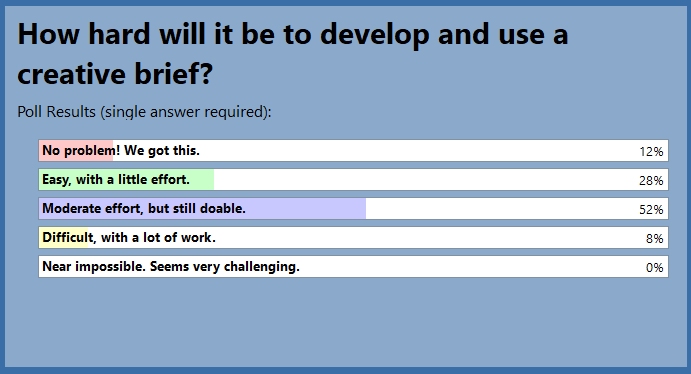
Using an Editorial Calendar
We talk about editorial calendars a lot here at Nonprofit Marketing Guide. It’s your #1 survival tool, or as I described it today, your “magical cat herding lasso.” The trick is not only to use it yourself but to make it highly visible to others, so that they see it’s how you make decisions about your workload.
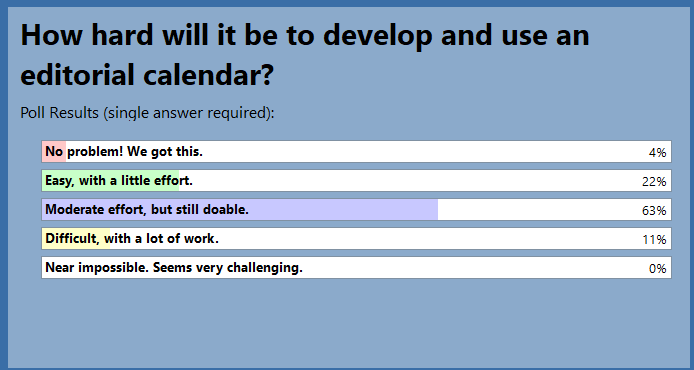
Saying No More Often
By nature, communications pros tend to want to be seen as likable, competent team players. That makes it hard to say No. They think they should be able to take on everything and get it down well. Of course, that’s self-defeating. By saying No more often so that you can focus on priorities, you are actually showing your strategic leadership. We discussed several ways to say No diplomatically.
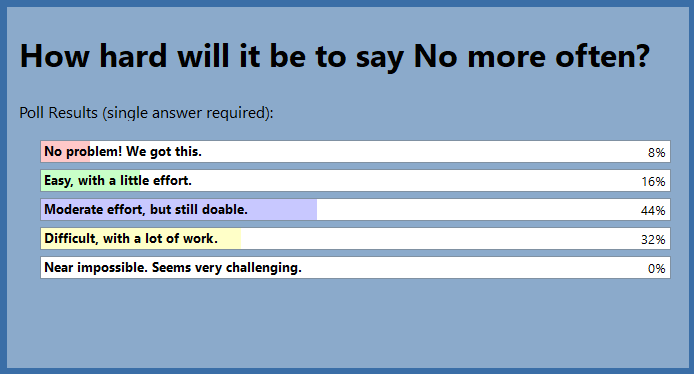
Clarifying How Decisions Are Made
It might seem that a long to-do list implies lots of decision making that led to all those tasks. But I’d argue that a long to-do list is actually a sign of the opposite: Not enough decision making. When you personally, or your organization collectively, fail to prioritize and make decisions about what is most important, your to-do list explodes.
On the webinar, I encouraged participants to really step back and look at how decisions are made (or almost made, or side-stepped) and how that affects their workload. Next, they should suggest new ways to make communications decisions. Not surprisingly, this seemed like a much harder challenge, but not impossible!
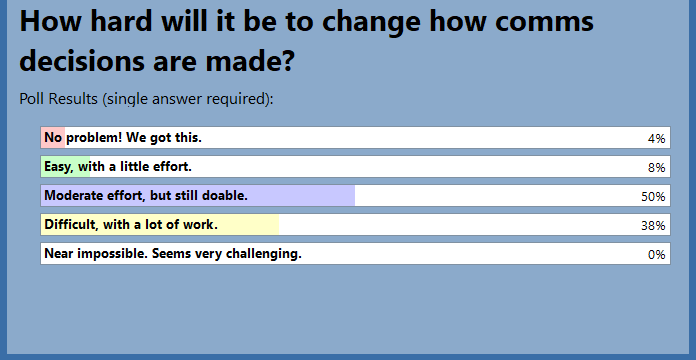
Change How You Manage New Ideas
In too many organizations, there’s a superhighway straight from brainstorming ideas to someone’s to-do list even if those ideas aren’t quite ripe. I suggested creating an idea parking lot and developing a process through which any good ideas parked there could become an assignment. It shouldn’t be automatic: Ideas should be run through a series of filters to determine if they should be acted upon. Those filters will vary from nonprofit to nonprofit but include things like clarity of purpose, staff time available, alignment with existing work, etc.
The poll results on this one surprised me: Nearly everyone thought this would take real work to accomplish. Based on the comments, this is primarily because (1) bosses will insist that the idea move forward now or (2) program people will threaten to go around comms if they don’t accept the assignment.
This is definitely an office culture problem — but one that is imperative to work on if you want to have any hope of a manageable to-do list. In communications works, there are simply too many good ideas and everybody has them! You must figure out a way to sort through them, so you only work on the best of them.
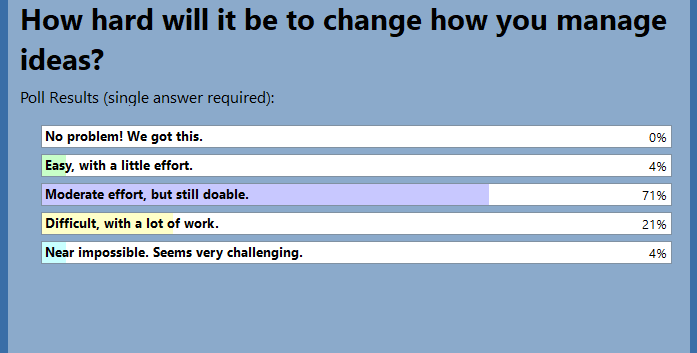
I’m excited to present Part II on Thursday, where we’ll look at streamlining the workflow AFTER projects are on the to-do list.





